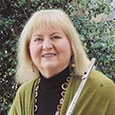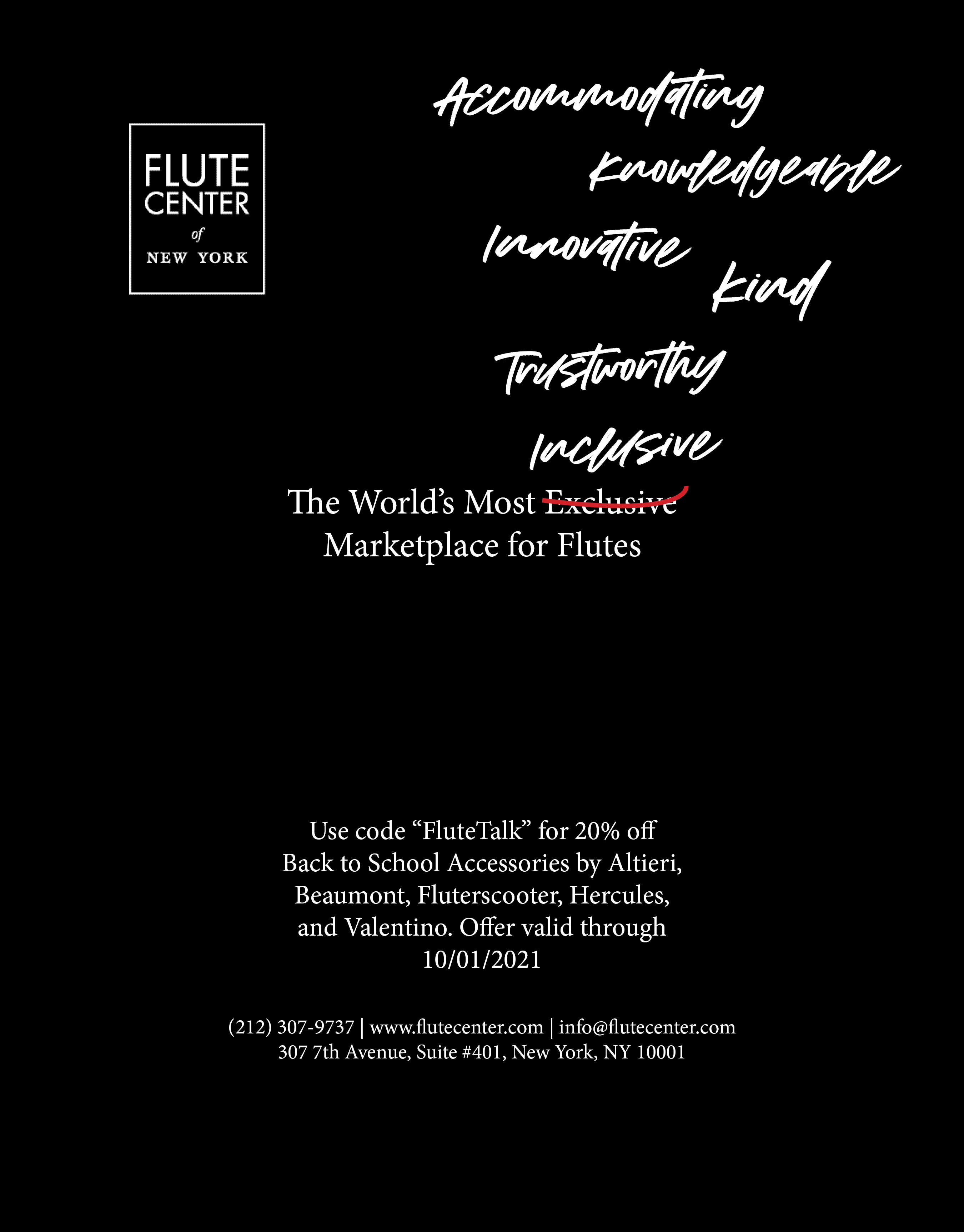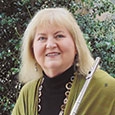“We are what we repeatedly do. Excellence, then, is not an act, but a habit.” – Aristotle
Practice is an emotionally charged word for many of us. We know that, on the mechanical level, comprehensive and thoughtful practice is essential to allow for accuracy, control, and freedom of expression. Methodical and meticulous attention to fundamentals forms the key to unlock our limitless potential. To flourish as a performing musician, we accept that this journey has no end, and it is up to us to portion our time wisely.
When we set aside precious time to practice, efficiency is paramount. Create a plan that is highly structured, yet flexible. Welcome challenges, but recognize frustration and give permission for patience and compromise. Allow experimentation and empowerment into your practice space. Trade self-doubt for trust and acceptance. All of this requires honesty and diligence, followed by a heightened sense of awareness. After all, our art requires listening at the highest level, whether we want to improve our skills, bring our best game to our colleagues, or mentor others.
I continually cycle through a variety books by flutists, other musicians, and those who study optimum performance analysis from other subjects, including athletes. One of my favorites is The Talent Code: Greatness isn’t Born, it is Grown by Daniel Coyle (Arrow Books) for guidance and inspiration. Coyle clearly outlines the powerful connection between effective practice and the brain, tips for what he describes as deep practice, and more. Such thought-provoking observations provide insight and motivation in my practice and with my teaching.
Flutists have a staggering amount of warm ups, studies, and etudes from which to choose. It is preferable to stay within the boundaries of a proven method, under the care of a meticulous teacher, until good habits are firmly established. That being said, there may be a time when it is necessary to substitute one method for another perspective. For example, I used the Taffanel & Gaubert 17 Big Daily Exercises for years until my book was in tatters. After replacing it with a fresh copy, I was weary of looking at the same exercises, most of which I’d memorized, anyway. So, I moved to the Moyse Daily Exercises, and was immediately energized. I later augmented my routine with Trevor Wye, Barrère, Maquarre, Reichert, and so on. I eventually settled comfortably into a solid routine while rotating a half dozen books or so at a time. I am currently in the same scale book I have used for over 7 years. Even though I have replaced the cover, it still feels fresh and challenging every single day.
I cannot overstate the effectiveness of harmonics, whistle tones, and vibrato studies. They have become the only way to start my practice: they not only quiet the frenetic chatter in my brain, but they help me find my chops more efficiently. They are convenient to play at any time of the day or night, because they won’t wake up my family or neighbors, or distract my colleagues backstage. However, when I was younger, it was a struggle to begin my practice with Moyse’s De la Sonorité because it was too slow and tedious for my frame of mind. I decided to shift the order of my routine to begin with my T&G series. Once that was complete, I was calm enough to listen deeply to Moyse. Bottom line: trust yourself and, if you are stuck, make adjustments.
There are differing schools of thought regarding the use of long tones. It used to be more acceptable for teachers to recommend (or perhaps, demand) a solid hour of long tones prior to the beginning of a practice session. While this still works for some flutists, the trend has loosened somewhat over the years with the addition of a wide variety of harmonics exercises. Frankly, who has that kind of time? I prefer shorter, yet highly concentrated, exercises that I can do with my students, between lessons, or right before a rehearsal. They fit into my lifestyle, which is usually fraught with interruptions. There are time-tested, even potent, exercises still popular today from the likes of George Barrère, Frances Blaisdell, and William Kincaid. I especially enjoy newer harmonics routines that include scales, popular tunes, and even opera excerpts.
A word about scales: YES. In all forms, speeds, shapes, articulations, dynamics, etc. Most books will suggest options. If so, try them all. Invent your own patterns. Even better, include forms and styles which complement particular challenging sections in your solo repertoire. For instance, if your solo has a daunting triple tonguing passage, then practice scales in that form. Remember the essential ingredient of effective articulation is your airstream. Modify your scale practice to support your solo repertoire, orchestral excerpts, and flute choir repertoire. Be prepared to adapt: Taffanel & Gaubert’s Ex. 1&2 begin on D1 and progress to B3. Perhaps that was an accomplishment when it was first published in 1923; however, it is highly impractical by today’s standards. Begin that exercise on a C1 and take it up into the 4th octave, as high as you dare. Having troubles with clean fingerings in the 3rd octave? Play those passages in quarter notes, or chunk them in groups of 4. Tailor the speed and articulations to suit your current needs. Be honest. Always reassess your flute set up, posture, and hand position. Consider the wealth of variations in George and Louke’s The Flute Scale Book, including Wiggles, Short Scales, Left Hand Scales, and more. Our bread and butter now exists at the top of the 3rd octave and into the 4th octave in much 21st century band repertoire (think the great David Maslanka.)
Consider extracting challenging technical passages from your solos and orchestral excerpts to create your own effective exercises. Practice them outside of your solo practice. Create an assortment of rhythms, articulations, styles: again, make it your own, and remember deep practice. Refer to The Aspiring Flutist’s Practice Companion by Terri Sánchez (Carolyn Nussbaum Music) for a wealth of practice variations. This also pertains to the business of beautiful legato intervals, delicately tapered notes in exposed sections of solo, orchestral, band, chamber repertoire, often the very last note, the note everyone remembers at a performance. Think the eloquent final note of Copland’s Appalachian Spring, the final five notes of the 2nd movement of Brahms’ Symphony No. 4, the evocative opening of Debussy’s Prélude à l’après-midi d’un faune – incorporate those sensitive notes into your daily routine so those moments create magic.
Etudes are, says Michel Debost, “a kind of super sightreading. Their aim is to cultivate, for about a week each, the ability to read ahead, willpower, and concentration.” One of my former teachers assigned an overwhelming number of etudes each week. Of course, they had to be accurate, or I would have to repeat them for yet another week, which would have been torture. Before playing, I checked the key and time signatures, searched for melodies buried under piles of notes, studied phrases (helpful for breath marks), and located the recapitulation. Upon further study, assessed similarities/variations; added markings (whole steps/half steps; chords/inversions/scales/use of B flat thumb key/etc.) If there were trills, grace notes, or other ornamentation, they were practiced separately. Then I started to play. This not only improved my etude study, but absolutely everything else I was working on.
Working your way through the standard etudes will do wonders for your reading skills, in every key and style. Remember to play with your most beautiful tone. Clean attacks and controlled note endings are paramount. Practice the rules of phrasing. Experiment for the most effective ritards and other transitions. Practice in chunks. Strive for accuracy and fluency. If you encounter a bump in a passage, mark it, polish it, and then restart the phrase – not the bar – so you will hear it and play accurately every time. There can added fun along the way by augmenting your study with etudes by jazz, artists or specialists in extended techniques, even playing duets with etudes (the Carol Wincenc editions of Andersen Op. 33 and Op. 15 plus the Berbiguier 18 Exercises (Keiser Music) for two flutes) to share the wealth with a practice buddy. The possibilities are endless.
Helpful practice tools include a metronome capable of subdivisions and volume adjustment, a recorder (a phone will suffice) for analysis and study, and a tuner. For an added dimension, consider tuning to organ drones. Excellent resources can be found on the websites of Drs. Terry (Bassoon Digital Professor) and flutist Laurel A. Ewell, which can be copied and saved to your computer. With each two-minute drone, rich in overtones, we have time to adjust as the overtones move in and out of phase. This is most beneficial during our current days of solitary practice, and will prepare us for when we will again resume playing together.
To develop your personal routine, select from the following books:
Recommended Flute Study Repertoire: Tone, Technique, Etudes
I. Tone
Pierre-Yves Artaud: Harmoniques (Billaudot)
Paul Edmund-Davies: Simply Flute Study Programme (www.simplyflute.com)
Robert Dick: Tone Development through Extended Techniques (Multiple Breath)
Patricia George and Phyllis Avidan Louke: The Flute Scale Book: The Path to Artistry; Advanced Flute Studies: The Art of Chunking; The Flute Vibrato Book (Presser)
Marcel Moyse: De la Sonorité (Leduc) and Tone Development through Interpretation (McGinnis & Marx)
Clare Southworth: Light Aerobics; Aerobics; Flute Reboot (Just Flutes)
Mark Sparks: Exploring the Sound: Tone Development Through Orchestra Repertoire (Mark Sparks)
Trevor Wye: Tone, Vol. 1 (Novello)
II. Technique
George Barrère: The Flutist’s Formulae (Schirmer)
Robert Cavally: Scale Studies and Velocity Studies (Robert Cavally)
Paul Edmund-Davies: 28 Day Warm Up and Simply Flute Study Programme (www.simplyflute.com)
Patricia George and Phyllis Avidan Louke: The Flute Scale Book; Flute 102; Flute 103; Advanced Flute Studies: The Art of Chunking (Presser)
Geoffrey Gilbert: Technical Flexibility and Sequences (Southern Music)
C.L. Hanon: The Virtuoso Pianist (Schirmer)
Walfrid Kujala: The Flutist’s Vade Mecum (Progress)
Andre Maquarre: 7 Daily Exercises, Op. 5 (Schirmer)
Terri Sánchez: The Aspiring Flutist’s Sound & Scale Book (Carolyn Nussbaum)
Robert Stallman: Flute Workout (International); The Flutist’s Handbook (Carl Fischer); The Flutist’s Détaché Book (Schirmer)
Paul Taffanel and Philippe Gaubert: The Complete Method (Leduc); 17 Daily Exercises (Leduc)
Trevor Wye: All Exercises and Studies (Novello)
D.S. Wood: Studies for the 3rd Octave (Carl Fischer)
John Wummer: 12 Daily Exercises (Carl Fischer)
III. Etudes
Marc Adler: Jazz Flute Etudes (Houston)
Henri Altès: 26 Etudes (Leduc)
Joachim Andersen: Op. 41, 37, 33, 21, 30, 15, 63, 60 (various)
J.S. Bach (trans. Amy Porter): Six Cello Suites for Flute (Carl Fischer)
J.S. Bach (trans. Robert Stallman): 33 Solos; 66 Pieces; The Well-Tempered Flutist (International)
Laura Barron (compiled & ed.): Expressive Etudes (Carl Fischer)
A.M.R. Barret: Oboe Method (various)
Benoit Berbiguier (ed. Wincenc & Wagorn): 18 Studies (Keiser) [2 fl. Optional]
Jacques Castérède: 12 Etudes (Leduc)
Robert Cavally: Melodious & Progressive Studies, Vol. 1-4 (Robert Cavally)
Tillmann Denhard: The New Flute (Universal)
Johannès Donjon: 8 Études de Salon (Whirlwind Press)
Louis Drouet: 25 Études célèbres (various)
Katherine Hoover: Etudes (Papagena Press)
Sigfrid Karg-Elert: 30 Caprices, Op. 107 (various) & 20 Progressive Studies, from Op. 41 and Op. 153 (Southern)
Mike Mower: The Modern Flute Player (Itchy Fingers)
Marcel Moyse: 24 Petites Etudes Melodiques; 25 Etudes Melodiques (Leduc)
Ali Ryerson: Jazz Flute Practice Method (Thistle Cottage)
Niccolò Paganini: 24 Caprices (International)
Astor Piazzolla Tango Etudes (Lemoine)
Gary Schocker: 10 Etudes (Presser)
Phil Snedecor: 20 Lyric Etudes (PAS Music)
All Etudes by Boehm, Bozza, Demersseman, Fühler, Furstenau, Gariboldi, Genzmer, Hughes, Jeanjean, Köhler, Kuhlau, Kummer, Moyse, Platonov, Schade, Tulou, Wye
* * *
Here is the current routine for both my students and me.
Daily Flute Workout Challenge Materials:
1. The Flute Scale Book: A Path To Artistry
2. Advanced Flute Studies: The Art Of Chunking
3. The Flute Vibrato Book
All by Patricia George and Phyllis Avidan Louke (Presser)
Handouts and/or suggested supplementary materials, optional
Part I: The Art Of Chunking (10-15 min.)
Daily Warm Up: p. 8-9 [vary Loops & Diminuendos, as suggested]
Part II: The Flute Scale Book (20-30 min.)
1. À la carte [10-15 min.] from Chapter 3: Warm Ups and Embouchure Development (p. 37-48) including Headjoint only (Two and Three Notes); L.H. Scales and Harmonics; Balancing the Flute; Trills for Balance; Octave Variations; Third Octave Wiggles; Short Scales; L.H. Melody exercises.
2. Five-Note Scale Patterns, p. 77 [start with 1 octave/day; increase to all octaves]
3. Tone Color Scales, p. 84 [start with 3 major/3 minor scales/day, including 8va; increase to 6, 9, 12, etc.]
4. Two-Octave Scales in 3rds, p. 57 (Major & Relative Melodic Minor) [start with 4/day; rotate articulations]; Wiggles in 3rds or 6ths optional.
5. Ascending Arpeggios, p. 62 or Descending Arpeggios, p. 64 (Major, Minor, Diminished, Augmented) [start w/one page/day; rotate]
6. Chromatic: Vary routine from suggestions in Chapter 6. Extra: Pellerite Chromatic Tonguing Exercises, p. 132.
7. Two Octave Scales, p.51: One scale/day. Extra: Major scale plus relative minors/day
8. Choose from supplemental exercises, technical passagework from solo(s): 5 min./day. [Step up: 20 min./day]
Part III: The Flute Scale Book (10-15 min.) **take short breaks**
Monday: p. 94 Pedal Point Arpeggios or P. 99: Pedal Point Broken Arpeggios
Tuesday: p. 61 Arpeggios and Chord Progressions
Wednesday: p. 107 Kuhlau Bass
Thursday: p. 110 7th Chords or p. 113 Broken 7th Chords
Friday: p. 120 Select from Chapter 6, p. 20 including Modal; Whole tone; Octatonic; Pentatonic; Blues, etc.
Saturday: p. 116 Dominant 7th Chords
Part IV: The Flute Vibrato Book (15-20 min.)
Include various exercises plus 1-2 melodies daily. Vary octaves. Add your favorite melodies. May be broken up throughout the day.
Part V: The Art Of Chunking (15-20 min.)
One complete lesson; include 8va’s. Proceed in sequence.
Take breaks, when necessary.
Prelude/Cadenza
Part VI: Etudes (15-20 min.)
As assigned: 2-3 etudes/week
Part VII: Solo(s); Band & Orchestral excerpts; Chamber Music (30 min.)
Notes: Times are suggested; adjust, as needed. Remember: quality, not quantity. Never play with any pain or discomfort; seek counsel and be open for modifications in posture, hand position, habits. Set a timer, only if helpful. Stop, and mark your place with a post it note; pick up and continue from there next time. No guilt allowed.
Keep track of progress with a notebook or practice planner (recommended: Molto Music Practice Planner, www.moltomusic.com)









